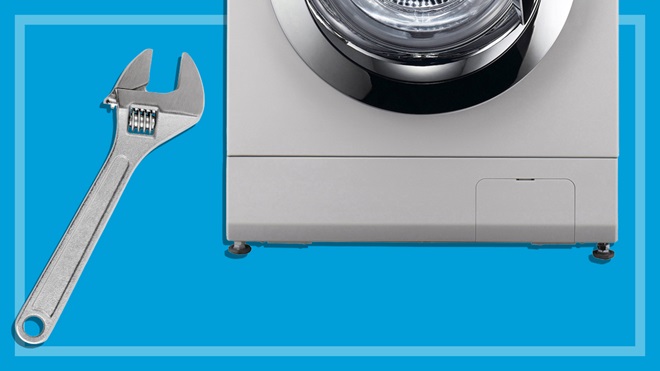We all get bored of the loud sounds and excessive walking across the laundry floor that some washing machines do over time. But there are a few things you can check to help keep your washer in place, such as the machine itself and what you put in it, right through to the floor it's sitting on.
Tips for keeping your washing machine in place
As a first step, use a spirit level to make sure the washing machine is balanced. If it isn't, try adjusting the feet to make it level.
Check the floor
You want the floor to be level and sturdy. It can also help to install the washing machine close to a wall or over a joist to reduce vibration.
Check the load
Make sure your load of washing is balanced in the machine. An unbalanced load can cause the machine to shake, so load your clothes in evenly, alternating between small and large items. It's a good idea to include smaller items when you wash things like towels and sheets, and you should also be careful not to overload the machine.
CHOICE tip: Top loader washing machines are less prone to vibration due to their lower spin speeds.
Use the right cycle for the job
Using the wrong cycle can cause the machine to shake, so it's worth reading the instruction manual and making sure you're using the best cycle for the type of load you're washing.
Check the parts
Make sure all screws, bolts and other parts are tightened securely, as a loose part can cause the machine to shake. You should also check that the hoses that supply water to the washing machine aren't kinked or damaged.
Try a pad or mat
If your washer continues to shake, you might want to consider a vibration pad or mat that you can place the machine on – these are useful for wooden floorboards to avoid leaving marks.
How do you deal with vibrating floorboards?
Concrete floors cope best with a front loader, but most manufacturers agree that standing a front loader on a timber floor shouldn't cause damage to the floor (due to the vibrations), as long as:
- your floor is in good condition
- your floor is level
- your floor is able to hold the machine's weight
- your washing machine's feet are adjusted properly and stabilised.
If your floorboards are in poor condition or you're still noticing excessive vibration, move the washing machine to a corner of the laundry where the floor is likely to be more stable.
Some manufacturers also advise putting a panel underneath the machine so its weight is distributed evenly. Some also recommend screwing the panel to as many beams as possible underneath the floorboards to help minimise vibration.
Still no luck?
If these steps don't help and your washer is still moving or shaking excessively, it's possible that there's a problem with the machine itself. In this case, you may need to have a professional repair it.
We're on your side
For more than 60 years, we've been making a difference for Australian consumers. In that time, we've never taken ads or sponsorship.
Instead we're funded by members who value expert reviews and independent product testing.
With no self-interest behind our advice, you don't just buy smarter, you get the answers that you need.
You know without hesitation what's safe for you and your family.
And you'll never be alone when something goes wrong or a business treats you unfairly.
Learn more about CHOICE membership today
Stock images: Getty, unless otherwise stated.



